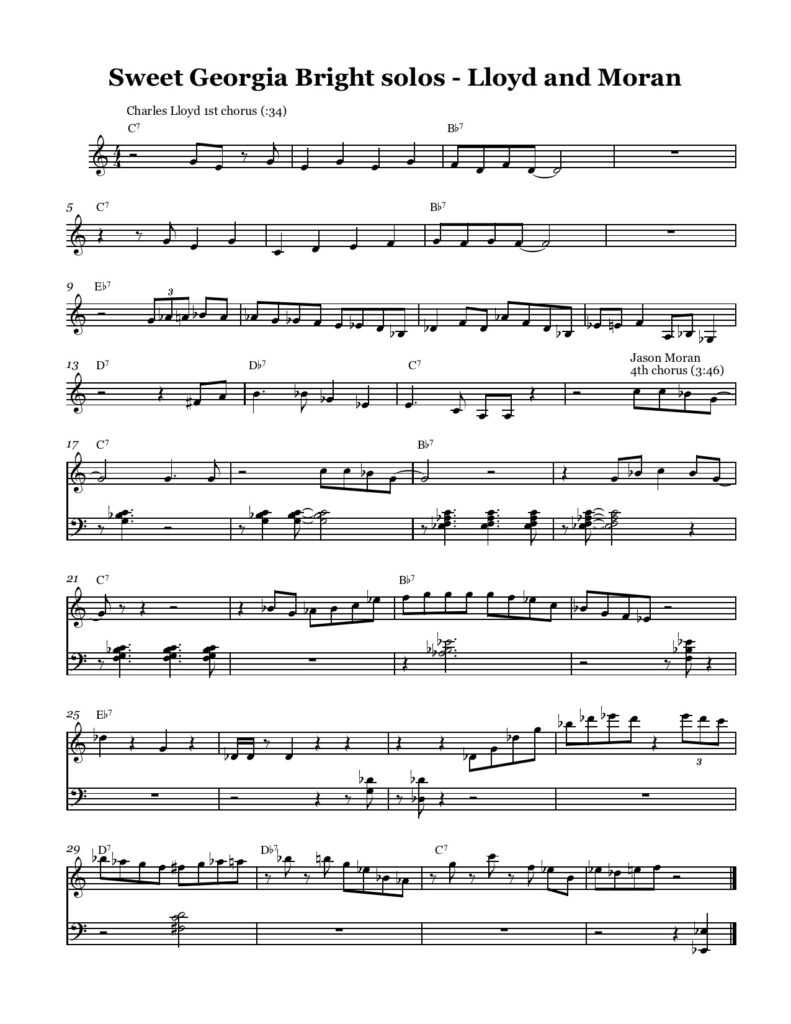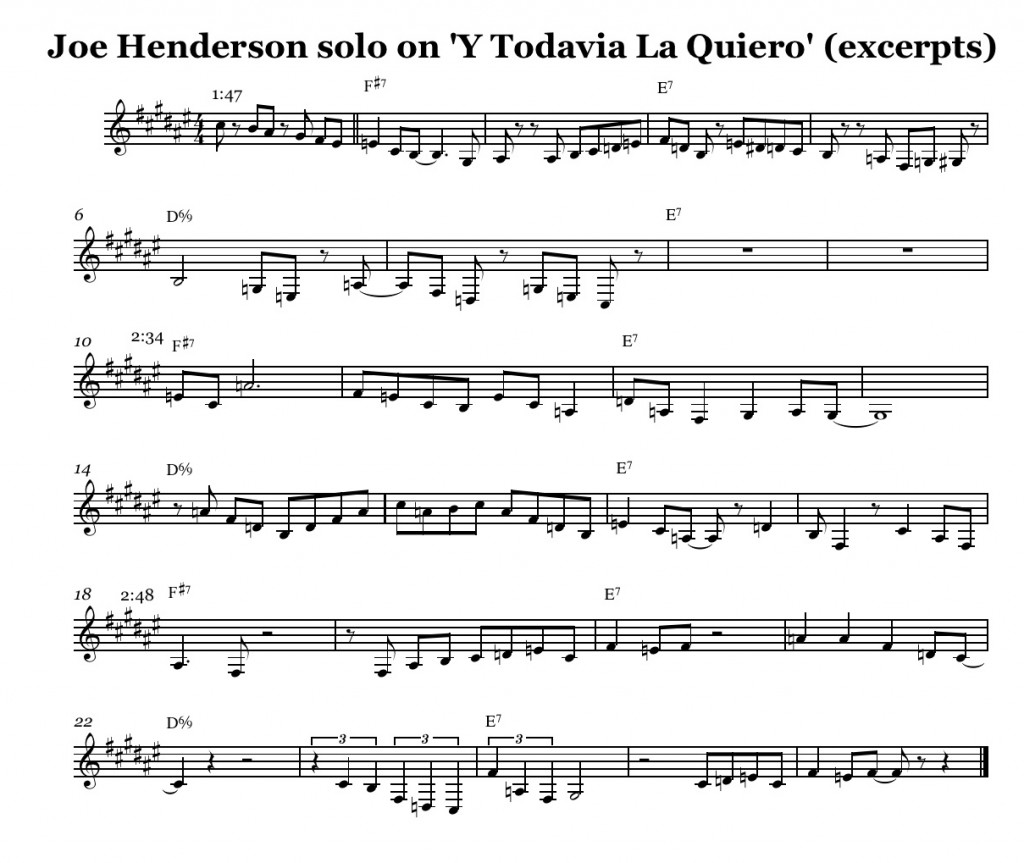‘Y Todavia La Quiero’ by Joe Henderson and ‘Sweet Georgia Bright’ by Charles Lloyd are two tunes that provide a good introduction to jazz and improvisation on the piano. Their chord progressions are made mostly or entirely of chord changes that last two bars each, a harmonic situation that is particularly conducive to right-hand/left-hand ‘conversation’ in a piano solo (either with chordal ‘questions’ and melodic ‘answers’, as in Wynton Kelly’s ‘Freddie Freeloader’ solo, or vice versa.)
A chart for the Henderson tune can be found in Tim Richards’ book Improvising Jazz Piano Volume One, and a chart for ‘Sweet Georgia Bright’ can be found in the sixth edition Real Book. For the transcriptions and exercises I’ve done on these tunes, I consulted the version of ‘Y Todavia’ on the Joe Henderson album ‘Relaxin’ at Camarillo’ and two versions of the Lloyd tune, the version from his album ‘Discovery’ with Don Friedman on piano and another from a live version featuring Lloyd’s more recent quartet with pianist Jason Moran, drummer Eric Harland and bassist Reuben Rogers. (Both Henderson’s recording and the one from Lloyd’s ‘Discovery’ are available on iTunes.) I saw Lloyd’s current quartet around the time the video was made, in a concert where they gave just about every tune the same kind of abstract yet totally swinging approach that they give ‘Sweet Georgia Bright’ in this version.
My exercise on ‘Sweet Georgia Bright’ is inspired by Charles Lloyd’s first chorus of solo from the live concert version, in which it sounds to me like his phrases are answering the first chord in each four bar phrase, and Jason Moran’s fourth chorus of solo, in which his right hand poses short ‘question’ phrases and the left hand answers with dominant-seven-sus-4 chords. Here is my transcription of both of these choruses

My exercise on ‘Y Todavia La Quiero‘ is based on Chick Corea’s solo during the intro to tune, where the bass line played by the left hand is answered with short right-hand melodic phrases based on the F sharp melodic minor scale. After transcribing Chick’s intro, I transcribed some excerpts from Joe Henderson’s solo, focusing on some of the more straight-ahead phrases, some using a one-scale-fits-all approach and some using a bebop-style ‘making the changes’ approach. Both of these are contrasted with other phrases where Henderson delves into overblowing and other techniques typical of ‘free’ playing. I would argue that it’s the contrast between the free and more structured phrases of the solo that make it a captivating piece of musical storytelling. (If you have the bass line memorized, the first two phrases can actually be played in the right hand along with the bass line in the left hand; the third phrase needs to be moved up an octave in order to fit with the bass line.)
 The way Henderson builds a long and varied solo over this simple eight-bar vamp by alternating modal, bebop and free playing reminds me of Sonny Rollins‘ wonderful bebop-tinged solo on the Rolling Stones tune ‘Waiting On A Friend’, discussed in an earlier blog entry.
The way Henderson builds a long and varied solo over this simple eight-bar vamp by alternating modal, bebop and free playing reminds me of Sonny Rollins‘ wonderful bebop-tinged solo on the Rolling Stones tune ‘Waiting On A Friend’, discussed in an earlier blog entry.
This is actually very helpful in learning the piece. By memorizing the left hand so I can focus on my right is a great way to get better at a piece more quickly.